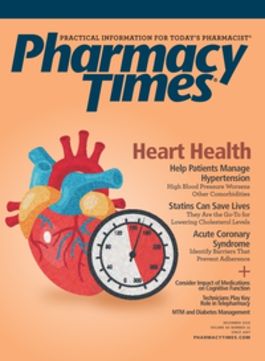Publication
Article
Pharmacy Times
Select High-Alert Medications Require Caution
Author(s):
Reduce the risk of errors with rapid acting–insulins fentanyl patches and weight-based chemotherapy doses.
Searching by generic name for rapid-acting insulins may cause prescribing or dispensing errors.
Medication errors have been reported because of mix-ups between Novo Nordisk’s Fiasp and NovoLog, as well as the company’s authorized generic for NovoLog, all of which are insulin aspart. However, Fiasp has niacinamide in the formulation, which makes it even faster acting than NovoLog. We warned about such errors in the April 2020 issue of Pharmacy Times®.1 Now the same problem exists with Eli Lilly and Company’s newly marketed Lyumjev, Humalog, and the company’s authorized generic for Humalog, all of which are insulin lispro. Lyumjev (pronounced LOOM jehv), which officially is insulin lispro-aabc (a 4-letter suffix is given to newly approved biologicals), contains treprostinil and other ingredients that make the product faster acting than Humalog.
These products have different onsets of action after subcutaneous injection and are not substitutable. Fiasp and Lyumjev are injected at the beginning of a meal or within 20 minutes after beginning to eat.2,3 Other insulin lispro products, such as Humalog, are given within 15 minutes before a meal or immediately after one.4 Other insulin aspart products, such as NovoLog, are given 5 to 10 minutes before a meal.5
Computer listings should always include the brand name for these insulins. For Fiasp, Humalog, Lyumjev, and NovoLog, prescribers should use the appropriate brand name on prescriptions, and electronic prescribing systems should communicate that brand name instead of only including the generic one. A pharmacist who recently reported the potential for mix-ups also recommended including niacinamide in parentheses with Fiasp listings and treprostinil in parentheses for Lyumjev listings. Safety would be improved if the FDA and the manufacturers examined ways to better communicate product differences. Also, patients should be made aware of the differences among insulins and be able to identify that the correct insulin has been dispensed by a pharmacist.
FENTANYL CONFUSION
Transdermal fentanyl 75-mcg-per-hour patches were dispensed to a patient with directions to apply 1 patch every 48 hours. However, the physician prescribed fentanyl patches 50 mcg per hour. The prescription read, “fentanyl patch 72-hour 50 mcg/hour transdermal, 1 patch to the skin every 48 hours.”
The pharmacy employee who entered the prescription into the pharmacy computer system read “fentanyl patch 72,” which led him to mistakenly select a 75-mcg-per-hour patch instead of a 50-mcg-per-hour patch. The inclusion of the duration of controlled drug delivery, such as 72 hours, in the drug description field contributed to this dispensing error.
To reduce this type of error, the duration of controlled drug delivery should not be included within the product description, which should include the release rate per hour, in this case, 50 mcg/hour. The dosing instructions should communicate the frequency of changing the patch, in this case, every 48 hours.
CHEMOTHERAPY DURING TELEHEALTH
An oncology clinic reported an unintended consequence of telehealth visits: the inability to document an accurate weight, leading to incorrect dosages of weight-based drugs. In this case, the patient had come into the clinic for her first chemotherapy treatment: protein-bound paclitaxel and gemcitabine. Because of coronavirus disease 2019, the patient had been participating in telehealth visits for several months prior to her first chemo treatment, during which her weight had not been measured or updated for 4 months. When she arrived at the oncology clinic for her first dose of chemo, her weight was obtained.
Unfortunately, the chemo plan was based on the weight measured 4 months prior, and the patient had lost weight. While double checking the chemo dose, the nurse noticed that the patient’s body surface area (BSA) was 7% lower than the BSA listed on her chemo treatment plan. In this organization, a BSA difference of 5% or greater requires a change in the dose. However, it took more than 2 hours to authorize a new dose based on the patient’s BSA, delaying the beginning of chemo administration. The clinic is working on a process to flag weights in the electronic health record that require updating prior to prescribing, dispensing, and/or administering weight-based medications. The clinic employees also are now inquiring about weight gain or loss during all telehealth encounters.
Michael J. Gaunt, PharmD, is a medication safety analyst and the editor of ISMP Medication Safety Alert! Community/ Ambulatory Care newsletter at the Institute for Safe Medication Practices in Horsham, Pennsylvania.
REFERENCES
- Gaunt MJ. High-alert medications require special safeguards. Pharmacy Times®. April 28, 2020. Accessed October 5, 2020. www.pharmacytimes.com/publications/issue/2020/april2020/high-alert-medications-require-special-safeguards
- Fiasp. Prescribing information. Novo Nordisk Inc; 2000. Accessed November 13, 2020. https://www.accessdata.fda.gov/drugsatfda_docs/label/2017/208751s000lbl.pdf
- Lyumjev. Prescribing information. Eli Lilly and Company; 2020. Accessed October 5, 2020. https://pi.lilly.com/us/lyumjev-uspi.pdf?s=pi
- Humalog.Prescribing information. Eli Lilly and Company; 1996. Accessed November 13, 2020. https://www.accessdata.fda.gov/drugsatfda_docs/label/2013/020563s115lbl.pdf
- Novolog.Prescribing information. Novo Nordisk Inc; 2019. Accessed October 5, 2020.www.novo-pi.com/novolog.pdf







